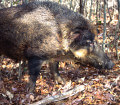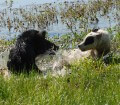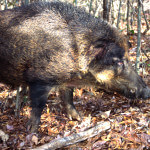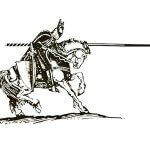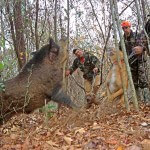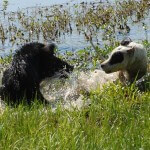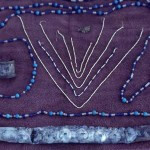John’s Note: Hunting savage wild hogs with a spear is a dangerous sport and has a history almost as old as mankind itself.
Hunting hogs with a spear has a history almost as old as mankind itself.
Homer, the Greek historian, wrote about boar hunting centuries before Christ was born. The Greek god, Hercules, was said to be a boar hunter, and the legendary King Arthur of early English mythology was reported to have hunted wild pigs. In India, lancers practiced their skills by taking wild hogs with spears from a horse. There are even pictures in ancient tombs depicting hog hunting with spears.
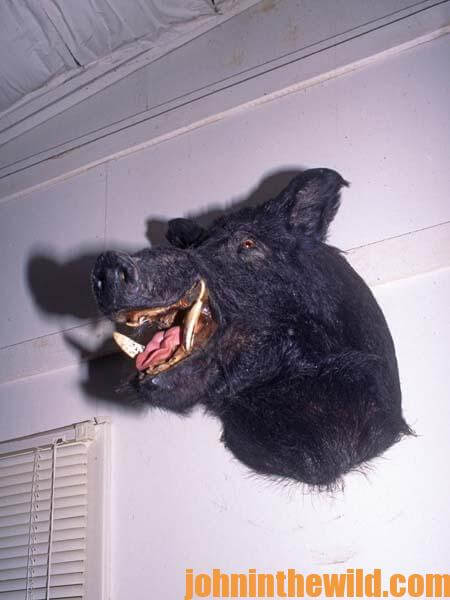 The men who hunted the savage boar had great respect for the animal’s ability to cut and maim. An old hunting guide in India once claimed that a wild boar was tough enough to drink water between tigers, and there are actual accounts of tigers being killed by boars in fights. Hog hunting was so popular in the 19th century that one sportsman wrote, “If fox hunting is the sport of kings, then pig sticking is surely the sport of everyone else.”
The men who hunted the savage boar had great respect for the animal’s ability to cut and maim. An old hunting guide in India once claimed that a wild boar was tough enough to drink water between tigers, and there are actual accounts of tigers being killed by boars in fights. Hog hunting was so popular in the 19th century that one sportsman wrote, “If fox hunting is the sport of kings, then pig sticking is surely the sport of everyone else.”
So, hunting hogs with a spear wasn’t new and was an old sport with its roots in mythology. However, I didn’t uncover two important facts about the sport until my hunt for a wild boar with a spear at the Bostick was over. Had I known about them, it would have made my quest simpler. The first pig hunters usually hunted in teams, so one man could distract the hog while the others speared the pig from different angles. When the horse was finally domesticated, most hunters left the ground for the safety of the horse’s back. Not only was it safer, but a spearman also could much more effectively kill a hog from a horse.
The Wild Hog in America:
There are many tales circulating as to when the wild hogs were introduced into America. History does reveal that some of the first stock was domestic swine released around farms to either root hog or die. In the spring, the hogs were often tolled up, captured in traps where they were marked to show ownership and then either released or taken to market.
 The first true wild boars to be brought into this country were introduced into a game park in Sullivan County, New Hampshire, by Austin Corbin in the early 1890s from the Black Forest of Germany. Another introduction of wild European boar was made in the Great Smoky Mountains of North Carolina and has been the subject of quite a debate. Some believe the Great Smoky Mountain boars were captured in Germany’s Black Forest and imported to the region by an adventurer named Barnes. Others are convinced that two North Carolina brothers imported several Russian boars after World War II into the Great Smoky Mountain region.
The first true wild boars to be brought into this country were introduced into a game park in Sullivan County, New Hampshire, by Austin Corbin in the early 1890s from the Black Forest of Germany. Another introduction of wild European boar was made in the Great Smoky Mountains of North Carolina and has been the subject of quite a debate. Some believe the Great Smoky Mountain boars were captured in Germany’s Black Forest and imported to the region by an adventurer named Barnes. Others are convinced that two North Carolina brothers imported several Russian boars after World War II into the Great Smoky Mountain region.
Actually, in the early part of the 20th century, an Englishman named George Moore leased a large portion of land near Hooper Bald, located a few miles past the Tennessee and North Carolina state line in North Carolina, to set up a game sanctuary. Then, in 1910, he brought in crates filled with several wild boars. The animals were released on the preserve and eventually escaped into the Great Smoky Mountains where they bred and interbred with feral and domestic hogs. Although the name Russian boar today is used frequently in the Great Smoky Mountains area, a pure strain of the Russian hogs is yet to be documented in the region.
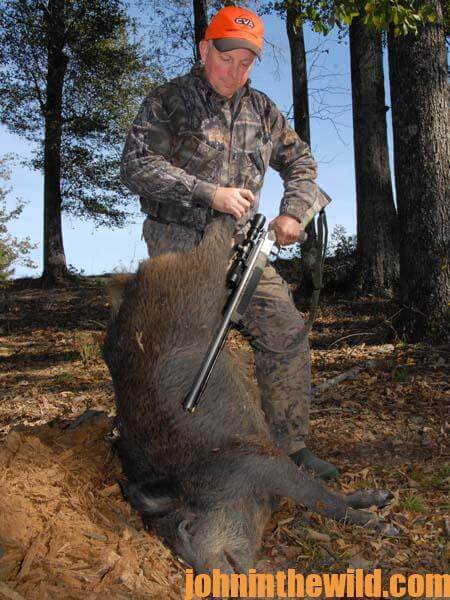 The wild hogs I was to hunt on the Bostick Plantation (www.bostick-plantation.com) in South Carolina were a remnant of the European hogs brought over by the early settlers and released on the land. When fence laws were enacted in Georgia and South Carolina, farmers there attempted to round-up all the wild hogs and lock them up behind fences, but the hogs proved to be stronger than the fences. Farmers soon realized that when feral pigs decided to stay in a briar thicket, there was very little anyone could do to get them out. Because the animals were so prolific and adaptable to a river bottom swamp situation, capturing all the pigs never has been possible in the Savannah River swamp.
The wild hogs I was to hunt on the Bostick Plantation (www.bostick-plantation.com) in South Carolina were a remnant of the European hogs brought over by the early settlers and released on the land. When fence laws were enacted in Georgia and South Carolina, farmers there attempted to round-up all the wild hogs and lock them up behind fences, but the hogs proved to be stronger than the fences. Farmers soon realized that when feral pigs decided to stay in a briar thicket, there was very little anyone could do to get them out. Because the animals were so prolific and adaptable to a river bottom swamp situation, capturing all the pigs never has been possible in the Savannah River swamp.
To learn more about all types of outdoor adventures, click here to get John E. Phillips’ print and Kindle books.

